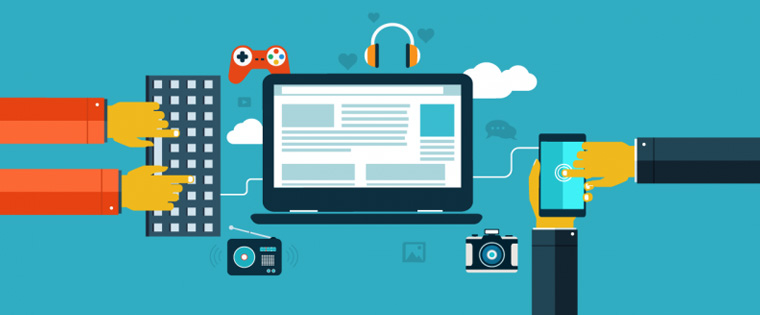Going for Microlearning? 6 Formats You Should Try

Gone are the days of lengthy eLearning courses. Today, most organizations across the world are delivering learning content to their employees in the form of 3-7 minute online nuggets. The growth in the use of microlearning is primarily driven by its suitability to meet the short attention spans of the 21st century workforce. Furthermore, bite-sized courses can be accessed seamlessly on mobile devices, which has become the order of the day. Microlearning modules help learners retain information better and are very useful to provide high quality just-in-time (JIT) knowledge support.
Microlearning is Not Just Videos
Here are 6 Popular Microlearning Formats:
- Videos
- Flow Diagrams/Animations
- Infographics
- Flip Cards
- Simulations
- Scenario-based Modules
Are you too planning to go the microlearning way? How can you make the best use of bite-sized learning? Among the various aspects you need to consider, the choice of the right format is very important. In this blog, we will examine six formats that can be used effectively to deliver content through online learning nuggets.
6 Popular Microlearning Formats
1. Videos
Video-based lessons help learners connect emotionally with the learning content. They are more effective than other media formats in enabling your employees absorb learning content, as they help reduce cognitive load by facilitating acquisition of knowledge and skills through the use of both ocular and aural channels.
You can use bite-sized learning videos with a high degree of efficacy to demonstrate procedures and explain the functioning of products. One of our clients in the consumer electronics sector has developed a series of microlearning videos for its technicians to explain how its washing machines work.
Here’s How Microlearning Can Boost Your Overall Employee Performance
2. Flow Diagrams/Animations
Many a time, companies need to explain business and/or manufacturing processes to their employees, and there can be no better way than using animations to train employees on these processes. You can use flow diagrams to explain each step of a process and where it fits in the entire process. One of our clients in the retail sector uses flow diagrams with a high degree of efficacy to explain the Procure-to-Pay (P2P) process. Animations are also useful to explain the different parts of a system.
3. Infographics
Human memory is short, and learning needs to be reinforced for proper application of knowledge at the workplace. You can use infographics effectively to reinforce knowledge delivered in a training program. They are great tool to present a comprehensive chunk of information in a visually appealing manner. One of our clients in the retail electronics space uses these microlearning materials to reinforce knowledge about televisions. The client has created several infographics, each listing the features of a particular brand. Its staff can access the infographics on their mobile devices, ensuring that the knowledge acquired is not lost to memory.
4. Flip Cards
In several cases, companies need to educate learners, especially new hires on definitions and terminology, and flip cards can be used very effectively for this purpose. When a learner clicks a card containing a term, if flips to reveal its meaning. These microlearning resources are also very useful for reinforcing key terms and definitions. One of our clients in the pharmaceutical sector has created a series of flip cards for reinforcing information about diseases, imparted to its medical reps. For example, when a learner wants to look up to the definition of the term Achalasia, he can click a flip card containing the term, which flips to reveal its definition — a condition characterized by the inability to push food down toward the stomach.
5. Simulations
We all know that companies use various software applications and it is important to train their employees on these applications for enhancing efficiency levels. You can use bite-sized simulations for training your learners to perform specific tasks using software applications, in an effective manner. One of our clients in the automobile sector has developed several watch-try-do simulations for training its learners on using SAP. Each simulation explains how to perform a specific transaction using the ERP system, such as creating an invoice, generating a bill of materials (BOM) and so on.
6. Scenario-based Modules
Often, companies need to train their staff how to act in a given situation, and bite-sized online learning scenarios can be used very effectively for this training. They explain the consequences of their decisions effectively. One of our clients in the pharmaceutical sector uses microlearning modules containing scenarios to help its medical reps deal with objections of doctors. Each learning nugget has a scenario which addresses a specific objection.
It’s a Wrap!
Good microlearning modules go a long way in training your employees effectively and help provide just-in-time (JIT) knowledge support of high quality. Make the best use of the learning formats listed above to unleash the power of bite-sized learning. Download this handy guide now to explore the nitty-gritty of microlearning.



![What are the Steps for Effective Microlearning Design? [Infographic]](https://blog.commlabindia.com/hubfs/blogs/steps-effective-microlearning-design-info.jpg)
![Understanding Microlearning – What it is and What it Isn’t [Video]](https://blog.commlabindia.com/hubfs/Imported_Blog_Media/microlearning-what-it-is-webinar-video.jpg)
![What are the Best Authoring Tools to Develop Microlearning Assets [Infographic]](https://blog.commlabindia.com/hubfs/blogs/best-authoring-tools-develop-microlearning-assets-info.jpg)